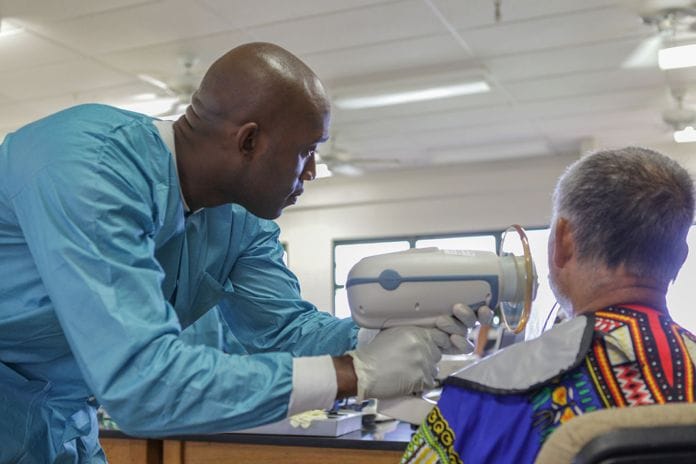Handheld portable imaging devices have increased in popularity over the recent years. Offices are converting to handheld units for a number of reasons. This includes portability, space-savings and the big one, cost-effectiveness. Handheld units are battery operated and can be recharged in a timely manner. As dental hygienists, we are the ones exposing the majority of images throughout the day. So, let’s ask ourselves, do we know enough about portable units? Is it safe to use, not only for my patient but also for myself? Is it easy and effective? We know saving time is the money maker, but we also need to make sure this is a safe alternative to the traditional wall mount.
Most handheld units look similar in appearance. However, it is crucial to do some research on which model is safer than others. Some models have been used in more studies, making knowledge more known to professionals. In addition, some have been approved by the Food and Drug Administration (FDA), while others have not been approved. This should be taken into consideration when an office is getting ready to purchase a handheld X-ray unit.
Handheld units are compatible with film, phosphor plates, and sensors. There are positioning devices made specifically for handheld units that have shorter arms so using the paralleling technique is still possible. It is also acceptable to use tabs or the bisecting technique. However, as hygienists we know that the paralleling technique is going to offer us less possibility for error, leading to fewer retakes and radiation exposure.
To break down the components of a handheld X-ray unit, there is a fixed beam, X-ray focal spot, protective shielding, and a backscatter radiation shield. The backscatter radiation shield is probably the most important part of the unit when it comes to radiation safety. The shield is usually made of thick acrylic, and when held correctly, it is to protect the clinician from backscatter radiation. As dental hygienists, if we follow the manufacturer’s direction and hold the unit in proper position, studies show no additional radiation exposure.2 This means if the clinician is using a unit with a backscatter shield, a protective apron does not need to be worn by the clinician. However, the patient should still wear one.
How Do I Hold A Handheld Unit?
The handheld units are to be held at mid-torso height. When held here, the backscatter shield is meant to protect you from head to toe from scatter radiation. The clinician should keep the cone as close to the patient’s face as possible without touching them.1 After following the safety positions, the alignment for taking an image is the same.
So next question, how do I hold the unit at mid-torso height when every patient’s head does not line up to mid-torso height? This is where it can get tricky. Have the patient come to you. After all, you want to protect yourself after protecting the patient. The patient chair can be moved to better adapt to you, or if you are somewhat vertically challenged, a small step stool can solve the problem.
What’s Great About Handheld Units
As dental hygienists, we are constantly seeking better access to care for our patients. This is one of the biggest hurdles for us. Volunteering at events that are not held in a traditional dental office setting shows how great a handheld imaging unit really is for our patients and us. So yes, they are great for these types of events. But offices can use them on a daily basis if used properly. Can you tell I cannot stress this part enough? If you go out of position, you are now at a higher risk for radiation exposure. To compare, this is similar to standing four feet away rather than the standard six feet away when you are taking an image with a wall mounted X-ray unit.1
Bottom Line
A handheld portable X-ray unit can be a useful addition to the dental practice, volunteer events, or the public health sector. When used appropriately, studies show no additional radiation when compared to a traditional wall-mounted unit.2 Trouble occurs when clinicians are not properly trained on the handheld unit. Just like with any new product, thorough training is crucial to make sure the patients and staff are protected and safe.
Before you leave, check out the Today’s RDH self-study CE courses. All courses are peer-reviewed and non-sponsored to focus solely on pure education. Click here now.
Listen to the Today’s RDH Dental Hygiene Podcast Below:
References
- Dental radiographic examinations: recommendations for patient selection and limiting radiation exposure. Chicago: American Dental Association, Council on Scientific Affairs; 2012. 27p.
- Makdissi, J., Pawar, R. R., Johnson, B., & Chong, B. S. (2016). The effects of device position on the operator’s radiation dose when using a handheld portable X-ray device. Dentomaxillofacial Radiology, 45(3), 1-7. doi:10.1259/dmfr.20150245












